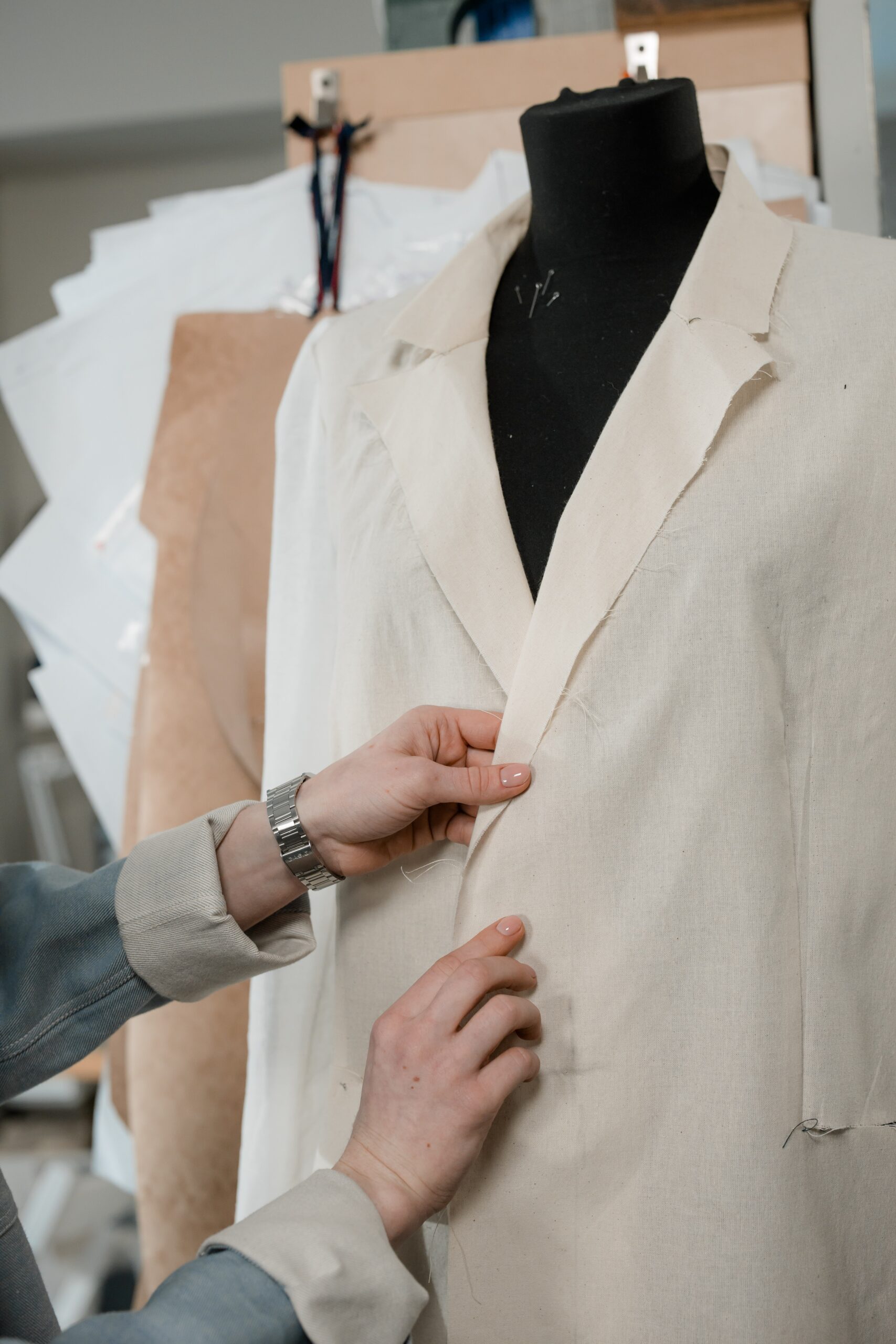Introduction
We all are fascinated by the word, “Fashion”. It is a major part of our lives and people are more inclined towards buying products of brand having a great name in the market. In India, the fashion industry is growing day by day and it has seen a major expansion in the last decade. The growth in domestic designers can be seen in the increase number of large fashion events in the country. India has a rich taste in traditional fashion, jewelries and native costumes which can be seen in every state. On one hand, India is seeing a major boost in its economy by having an increase contribution in the fashion industry and on the other, some are counterfeiting the products of the famous brands resulting into a huge impact on the owners of these brands. In India, the fashion industry is given protection under the Intellectual Property Laws such as Designs Act, 2000, Trademark Act, Patent Act, Copyright Act, Geographical Indication of Goods Act. Unlike other countries like France, where the buyers who buys these copied or counterfeit items are criminally liable, India don’t have such types of laws yet. The owners of the brands can seek permanent injunction or can compensate for the losses they have been incurred.
Trademark and Fashion Industry
A Trademark is any word or symbol which enables a brand or organization to distinguish from other brands or organization of similar kind. Trademark creates a goodwill for the product, guarantees the quality of the product and advertises it. Basically, it identifies the origin of the product and helps to distinguish it from the copied products. Similarly, Trademark in the Fashion Industry protects brand name, logo, or any features of the fashion attire. To get a trademark protection, the owners must create their products in such a unique way that it can get the attraction of the consumers and helps in marketing.
However, the scope of trademark protection for fashion designs is quite limited. The Designs Act of 2000, expressly excludes the trademark under Section 2(d) while defining “design”. That would mean that a fashion design which is trademark cannot get protection under the Designs Act, 2000 and similarly, a fashion design registered under the Designs Act, cannot be protected under the Trademarks Act, 1999. However, the Hon’ble full bench of Delhi High Court by 2:1 majority in the landmark case of Micolube India Ltd. Vs Rakesh Kumar & Ors[1]., has expanded the scope of trademark protection for design. It was held that if a fashion design is registered under the Designs Act, it not only gets protection under the Act but can also be protected by instituting an action for passing off provided that the design was being used as trademark post-registration. This judgment has unlocked the various ambit of trademark protection in India which was limited before.
In another case, Louis Vuitton Malletier vs Atul Jaggi[2], the Delhi High Court passed an order that by which the defendants were restrained from influencing and passing off the famous trademarks, “Louis Vuitton” and “LV” by using identical marks and the plaintiff was granted damages. It was also said that the designers can not only protect the logos or brand names but also distinct features of the products.
In another famous case of Christian Louboutin vs Mr. Pawan Kumar & Ors[3], where the court declared in its judgment that Christian Louboutin as a well-known mark and directed the defendants to pay a compensation of Rs.10.7 lakhs, while they were refrained from selling counterfeited products permanently. The red colored sole heels of Christian Louboutin are highly famous across world. Their shoes are famously known among celebs and therefore they are known for distinctive red colored sole heels which are common in their creations and are sold widely across various stores in India, as well. The defendant i.e. Kamal footwear and Adhara steps were selling the exact same products at a highly cheap rate thus, causing loss both to the brand name and the financial offers of the company. Hence, this case is an example that the designers need to protect their IP rights, so as not to cause any loss in the future.
Copyright Act and Fashion Industry
Fashion is an art which involves creativity, originality and expression. Similarly, the Copyright is the legal right which protects any work which involves originality and creation. Section 2(c) of the Copyright Act, 1957 protects such creation of the designers from being exploited or copied. The original designs of the fashion designer gets protection under the Copyright Act, 1957, for the period of ten years from the date of registration. However, Section 15 of the Copyright Act shows the relation between the Copyright Act and the Designs Act, 2000, which when read with Design Act gives a basic framework for design protection in India such as:
- Designs which are capable of being registered under the Designs Act, 2000 and registered as per the provisions of the Act, gets protection under the Designs Act, 2000 only.
- Designs which are capable of being registered under the Designs Act but not so registered, gets protection under the Copyright Act, 1957.
- Designs which are not capable of being registered under the Designs Act, 2000, gets protection under the Copyright Act, 1957.
In the unique case of Ritika Apparels vs BIBA[4], which basically identifies the loopholes existing in the IPR Laws, by which the defendant i.e. BIBA escapes from the liability. In this case, the defendants copied a design from the plaintiff’s creation and started to sell in their own name. The plaintiff i.e. Ritika Apparels alleged for copyright infringement. However, the defendants took the defense of Section 15(2) of the Copyright Act, 1957 and said that the act does not amount to copyright infringement as the plaintiff who has not registered its design under the Design Act, and that the plaintiff has lost their corporate ownership due to reproducing the same design more than 50 times. Thus, this case shows that there is a need for awareness of the knowledge of various IP laws pertaining to fashion industry to the Indian designers for the promotion of artistic innovation and creation in the country.
In another case of Rajesh Masrani vs Tahiliani Design Pvt. Ltd[5]., the plaintiff i.e. Tarun Tahiliani Pvt. Ltd. is a famous name in the fashion industry under the name of Mr. Tarun Tahiliani having a global reputation in more than 20 countries. The plaintiff filed a suit for infringement under Copyright Act against the defendant i.e. Rajesh Masrani on the ground that the defendant had copied their fabric prints including the drawings or sketches thereof, or of copyrighted works of the Plaintiff including works of artistic craftsmanship. The Honorable Court held that the plaintiff’s work was entitled for protection under Section 2 (c) of the Copyright Act and is an original artistic work. The work was an ‘artistic work’ and therefore it is not capable of being registered under Section 2 (d) of the Designs Act, 2000 and the provision of Section 15 (2) is not applicable. It was further pointed out by the court that the plaintiff’s work was reproduced twenty times and therefore Section 15 (2) of the Copyright Act which bars the subsistence of a copyright in a design capable of being registered under the Designs Act but not so registered upon the design which was reproduced more than fifty times, is not applicable in the present case.
Thus, the present case clearly lays out the nexus between the Designs Act, 2000 and the Copyright Act, 1957.
Designs Act and Fashion Industry
The Fashion Industry is greatly emphasized and defined by the Designs Act, 2000. In terms of fashion, design is any shape, pattern or color combination which is unique and makes the garment distinguishable from others. One cannot protect the whole garment under the Designs Act but only a particular design on the garment can be protected. If a design is not registered under the Designs Act, you cannot claim damages in case of infringement. A well- known case of Ritika Apparels vs Biba[6], clearly defines this. The defendants in this case used Section 15 (2) of the Copyright Act, which says that if a creation which has not been registered under the Design Act, which is capable of being registered and has been reproduced more than fifty times by industrial process, then it will considered that the Copyright in the design has been lost forever.
However, the Designs Act has certain loop holes which do not suit the need of the fashion houses in India which are as under:
- Since the fashion houses come up with fresh collections usually every season, the concept of not providing protection to unregistered designs under the Designs Act, 2000 hampers their innovative creations in the market, which needs immediate protection independent from registration for their designs.
- The registration process as given under the Act takes about 10-12 months which is not favorable to the dynamic needs of the fashion industry as the new collection lasts only for a season which is about 2-3 months. Hence, to tackle this the designers have to apply for registration much before the market presentation which comes up with another risk of exploitation by any person under whose hands the designs may fall.
- The amount for recovery of damages as incorporated under the Act is very limited which is way less than the amount i.e. lakhs of rupees which is used to make a couture.
These shortcomings creates hindrance in the way of fashion designers to market and promote their designs in India. On the other hand, the legislations relating to industrial designs in foreign countries provide a sui generis protection to fashion designs which are explained as under:
- European Union
The European Union is a political and economic union of 27 member states covering much of the European Continent. The Council Regulation No 6/2002 of 12 December 2001 on Community Design includes provisions relating to “Registered Community Design Protection” and “Unregistered Community Design Protection” for designs. The Registered Community Design Protection provides exclusive rights to the owner to use the designs and to prevent any person or third party from using it without the consent. Whereas, the Unregistered Community Design Protection confers on the holders of the designs to prevent any person from using, making, creating, exporting, etc., only if the said use results from copying the design. The Unregistered Community Design Protection provides protection for a shorter period i.e. 3 years from the date on which the design was first made available to the public. This shorter period protection is usually useful for the industry which produces larger number of short-lived designs i.e. fashion industry.
- United Kingdom
In UK, the laws relating to industrial designs are governed under two legislations i.e. The Registered Designs Act, 1949 and the Copyright, Designs and Patents Act, 1988. The Registered Designs Act, 1949 contains provisions for registration and protection of registered designs whereas the Copyright, Designs and Patents Act, 1988 provides protection to the unregistered designs in the UK. The Act provides that the rights in a design either lasts for ten years after the first marketing of articles that use the design, or fifteen years after the creation of the design, whichever is earlier. Since, the rights in unregistered design is limited and does not provide the monopoly rights but the fashion designers in UK has an exclusive rights to protect their unregistered designs from copying or piracy by instituting a suit for infringement and may get relief by way of damages, injunctions, etc. under the Act.
- United States of America
In America, the two bills namely “The Innovative Design Protection and Piracy Prevention Act, 2011” and “The Innovative Design Protection Act, 2012” seek to amend the Copyright Law of the U.S.A. so that sui generis protection can be provided to the fashion design. Both the bills are quite similar and seek to provide protection to the designs which are not registered for a period of three years from the date the design is first made in public. These bills are an attempt to protect the innovation, creation, marketing, etc. of the fashion designs and gives hope to the designers that their designs are protected at all levels from the evils of piracy.
Patent Act and Fashion Industry
Patent Laws is an area which is not mostly considered when it comes to artistic creations or we can say, the fashion industry. Since the artistic inventions cannot be patented but an era has come where technical innovation has grown rapidly in the fashion business. Fashion designers are now using new technologies to manufacture products like shoes, fabrics that includes technical superiority. For getting a patent, the invention must be novel, non-obvious and must be capable of industrial application. Back in 1987, Novozymes, a Danish Bio-Tech Company got a patent for developing a technology where they uses an enzyme called ‘Cellulase’ which removes indigo dye from denim so as to give fabric, a worn out look. This technology for treating stone washed denims were widely used by other denim industry under the license from the Novozymes.
Just like that, for an invention to be patented, it cannot be used or patented by others anywhere in the country, prior to filing of patent application. Also, the invention must not be obvious to the person ordinary skill in the art but since most of the garment industry are only reworking the patented inventions and are not novel enough to meet the statutory requirements for patent protection.
Conclusion
To conclude, we can see how the Fashion Industry and IPR Laws have been evolved and emerged as a boon to the Indian Fashion Industry. However, in Ritika Apparel vs Biba[7], we can clearly see how the defendants went scot-free after infringing the rights of the Plaintiffs. Besides that, we also need to take into account the provisions of the Designs Act of the European Union, UK and U.S.A. which is a way ahead of our time and provides protection to unregistered designs also, though limited in nature but it is proved to be suitable to the needs of dynamic fashion industry. On the other hand, our Designs Act fails to take into account such things. The Indian fashion industry is going into debt by not having an effective and efficient regime to provide protection to the domestic designers. Also, the time period taken by the jury to decide whether the act is an infringement is very tedious. Till the time it is decided, the time period subsisting in the product is expired and this causes huge loss to the designers. So, a panel of fashion experts should be made to decide on such issues, so that the judgments be given in due time. Since, the fashion design is one such industry where one or more designs traces back to pre-existing designs and it is problematic. Many large fashion houses are now licensing their trademark to small production houses and thus creating huge returns. For example, Armani is operating three different lines i.e. Armani Exchange, Giorgio Armani and Emporio Armani and thereby, limiting the act of piracy. However, the Government should also take steps and pass effective and efficient laws which can be a boon and a relief to the designers thus, promoting creativity and innovation at all levels.
[1] Micolube India LTD. v. Rakesh Kumar trading as Saurabh Industries & Ors , 2011, CS (OS) No. 1446/ 2011, (India).
[2] Louis Vuitton Malletier v. Atul Jaggi,2010, CS (OS) 1419 of 2009, (India).
[3] Christian Louboutin v. Mr. Pawan Kumar & Ors,(2018) 250 DLT 475, (India)
[4] Ritika Apparels v. BIBA, 2011, CS (OS) No. 182/ 2011, (India).
[5] Appeal No.: FAO (OS) No. 393/2008 (decided on 28/11/2008 by AK. Sikri and Manmohan Singh, JJ.)
[6] Ritika Apparels v. BIBA, 2011, CS (OS) No. 182/ 2011, (India).
[7] Ritika Apparels v. BIBA, 2011, CS (OS) No. 182/ 2011, (India).
Author: Ayushi Verma, completed her graduation in 2020 from Dr Ram Manohar Lohia National Law University, Lucknow with specialization in IPR Hons.


















